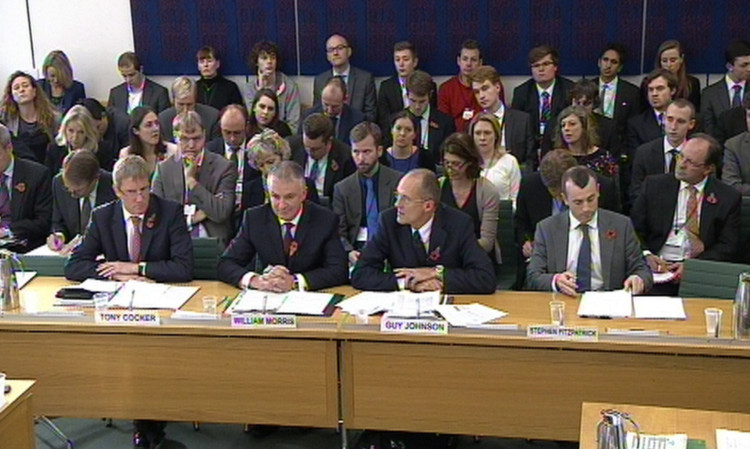Energy company bosses have defended controversial rises in customers’ bills, partly blaming green taxes for the recent hikes of over 9%.
One executive also denied that prices had been put up ahead of any freeze promised by an incoming Labour government.
MPs on the Energy and Climate Change Committee fiercely questioned the companies about their pricing policies and the impact of soaring bills on millions of consumers.
Guy Johnson, external affairs director of Npower, which has announced average rises of 10.4%, said the largest driver of price rises had been the cost of the so-called climate obligation on power firms.
The green taxes cover the period to March 2015, so the energy firms will have to fulfil a large part of their obligation next year, he said.
“That was a concern when we were considering prices for next year.”
Mr Johnson said firms were faced with increases in wholesale prices of 3%, increased transport costs of 10%, while costs such as the environmental obligations had jumped by 31%.
“External costs are driving our prices increase,” he maintained. “We are not raising them in anticipation of a price freeze.”
William Morris, managing director of SSE, which has announced an 8.2% price rise, said he regretted having to increase bills for customers, who were “struggling to maintain their budgets”.
Transport costs had increased by 10%, while the Government’s environmental schemes had risen by 13%, he said.
“We would like to see those costs taken off the customers’ bills and onto taxation. We welcome the Government’s decision to review that.”
An analysis by industry regulator Ofgem showed that, while the increases announced so far this autumn by some of the companies have averaged 9.1%, wholesale prices have risen by 1.7% – adding just £10 to the average household bill of £600.
SSE was the first of the major energy companies to announce it was raising gas and electricity bills. Its increase of up to 10% will add a typical £106 to annual dual-fuel customer charges to reach £1,380.
The company said wholesale energy prices were up 4%, paying to use newly-upgraded networks by 10% and Government-imposed levies up 13%.
British Gas is increasing electricity bills by 10.4% and gas tariffs by 8.4% for around 7.8 million families this winter.
RWE npower will put up electricity and gas prices by 9.3% and 11.1% respectively from December 1, affecting about 3.1 million customers.
ScottishPower will raise gas tariffs by 8.5% and electricity prices by 9% on average from December 6 for its 2.2 million customers.
Consumer group Which? has written to Chancellor George Osborne calling for him to take action to curb costs in his Autumn Statement, warning that three in 10 people do not know how they will afford to heat their homes this winter.
“People need your help – and they need it now,” it has told the Chancellor.
It calls for a number of measures to be introduced to claw back cash, including separating energy generation from supply to help make the wholesale market more competitive, scrapping the carbon floor price, freezing the smart meter roll-out for two years, removing the Warm Home Discount from consumers’ bills and reforming the Energy Companies Obligation, which helps people insulate their homes.
The plans could save consumers up to £1.8 billion per year, Which? estimates.
A Department of Energy and Climate Change spokeswoman said: “The Government is working hard to help people with their rising energy bills by improving competition, making the nation’s homes cheaper to heat and providing targeted help for the most vulnerable.
“The Energy Company Obligation helps people to save energy and money on their bills, through prompting energy companies to green-proof their customers’ homes.
“Having warmer and more energy-efficient homes, as a result of the Energy Company Obligation, will result in lower energy use, and by default lower energy bills.”
The Prime Minister’s official spokesman said: “It is for the energy companies to explain the decisions they have taken with regard to bills.”
